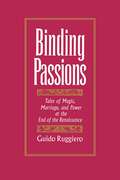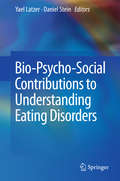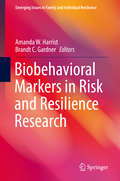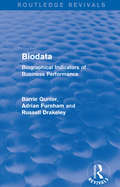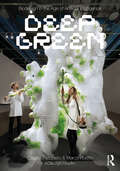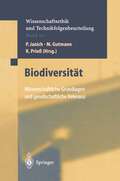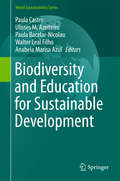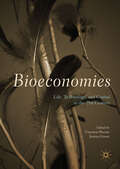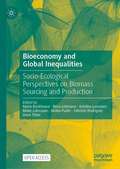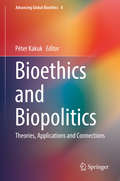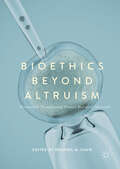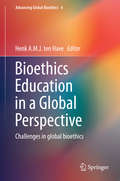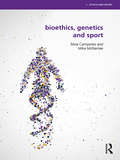- Table View
- List View
BIM-enabled Cognitive Computing for Smart Built Environment: Potential, Requirements, and Implementation
by Ibrahim YitmenThe book provides knowledge in the Building Information Model (BIM)-enabled cognitive computing methods for smart built environment involving cognitive network capabilities for smart buildings, integrating Augmented Reality/Mixed Reality in cognitive building concepts, cognitive Internet of Things (CIoT) for smart cities, Artificial Intelligence applications for cognitive cities, and cognitive smart cities using big data and machine learning. It focuses on the potential, requirements and implementation of CIoT paradigm to buildings, Artificial Intelligence techniques, reasoning, and Augmented Reality/Mixed Reality in cognitive building concepts, the concept of cognitive smart cities in its complexity, heterogeneity, and scope, and the challenge of utilizing the big data generated by smart cities from a machine learning perspective. The book comprises BIM-based and data-analytic research on cognitive IoT for smart buildings and cognitive cities using big data and machine learning as complex and dynamic systems. It presents applied theoretical contributions fostering a better understanding of such systems and the synergistic relationships between the motivating physical and informational settings. It reviews ongoing development of BIM-based and data science technologies for the processing, analysis, management, modeling, and simulation of big and context data and the associated applicability to cognitive systems that will advance different aspects of future cognitive cities. The book also analyses the required material to inform pertinent research communities of the state-of-the-art research and the latest development in the area of cognitive smart cities development, as well as a valuable reference for planners, designers, strategists, and ICT experts who are working towards the development and implementation of CIoT based on big data analytics and context–aware computing.
The Binding of Nations: From European Union to World Union
by M. CornerThe time is ripe for a new international organization, a Global Union based upon a limited sharing of sovereignty. This book examines the successes and failures of the European Union as a sovereignty-sharing organization, and suggests that this unique institution has a critical role to play in the development of a more effective world order.
Binding Passions: Tales Of Magic, Marriage, And Power At The End Of The Renaissance
by Guido RuggieroBio-Psycho-Social Contributions to Understanding Eating Disorders
by Yael Latzer Daniel SteinThis book uniquely combines cutting-edge medical, psychological, and sociocultural topics pertinent to eating disorders. In the medical realm, the book focuses on Eating Disorders’ newly investigated associations with ADHD and sleep disorders, and on innovative treatments of osteoporosis in anorexia nervosa. Novel contributions in the psychological realm address families’ trans-generational transmission of Eating Disorders-related difficulties and novel internet-based treatments for such families. Lastly, in the sociocultural realm, the book discusses social contagion and Pro-Ana websites as increasing risk for disordered eating in young women around the globe. This volume provides readers with more holistic perspectives of each realm and their interplay, to promote Eating Disorders’ understanding, treatment, prevention, and research. It provides various professionals including mental health providers, physicians, nutritionists, and graduate students in these professions.
The Bioarchaeology of Structural Violence: A Theoretical Framework for Industrial Era Inequality (Bioarchaeology and Social Theory)
by Lori A. Tremblay Sarah ReedyThis volume is a resource for bioarchaeologists interested in using a structural violence framework to better understand and contextualize the lived experiences of past populations. One of the most important elements of bioarchaeological research is the study of health disparities in past populations. This book offers an analysis of such work, but with the benefit of an overarching theoretical framework. It examines the theoretical framework used by scholars in cultural and medical anthropology to explore how social, political, and/or socioeconomic structures and institutions create inequalities resulting in health disparities for the most vulnerable or marginalized segments of contemporary populations. It then takes this framework and shows how it can allow researchers in bioarchaeology to interpret such socio-cultural factors through analyzing human skeletal remains of past populations. The book discusses the framework and its applications based on two main themes: the structural violence of gender inequality and the structural violence of social and socioeconomic inequalities.
Biobanks: Governance in Comparative Perspective
by Herbert Gottweis Alan PetersenIn recent years, a number of large population-based biobanks – genetic databases that combine genetic information derived from blood samples with personal data about environment, medical history, lifestyle or genealogy – have been set up in order to study the interface between disease, and genetic and environmental factors. Unsurprisingly, these studies have sparked a good deal of controversy and the ethical and social implications have been widely debated. Biobanks: Governance in Comparative Perspective is the first book to explore the political and governance implications of biobanks in Europe, the United States, Asia, and Australia. This book explores: the interrelated conditions needed for a biobank to be created and to exist the rise of the new bio-economy the redefinition of citizenship accompanying national biobank developments This groundbreaking book makes clear that biobanks are a phenomenon that cannot be disconnected from considerations of power, politics, and the reshaping of current practices in governance. It will be a valuable read for scholars and students of genetics, bioethics, risk, public health and the sociology of health and illness.
Biobanks: Governance in Comparative Perspective
by Herbert Gottweis Alan PetersenIn recent years, a number of large population-based biobanks – genetic databases that combine genetic information derived from blood samples with personal data about environment, medical history, lifestyle or genealogy – have been set up in order to study the interface between disease, and genetic and environmental factors. Unsurprisingly, these studies have sparked a good deal of controversy and the ethical and social implications have been widely debated. Biobanks: Governance in Comparative Perspective is the first book to explore the political and governance implications of biobanks in Europe, the United States, Asia, and Australia. This book explores: the interrelated conditions needed for a biobank to be created and to exist the rise of the new bio-economy the redefinition of citizenship accompanying national biobank developments This groundbreaking book makes clear that biobanks are a phenomenon that cannot be disconnected from considerations of power, politics, and the reshaping of current practices in governance. It will be a valuable read for scholars and students of genetics, bioethics, risk, public health and the sociology of health and illness.
Biobehavioral Markers in Risk and Resilience Research (Emerging Issues in Family and Individual Resilience)
by Amanda W. Harrist Brandt C. GardnerThis comprehensive reference explores the current and future state of biobehavioral markers in family resilience research, with special focus on linking biological and physiological measures to behavioral and health outcomes. It brings together the latest biobehavioral data on child-parent and couple relationships, adversity, and other key areas reflecting new technological advances in biobehavioral studies and translates these findings into implications for real-world practice and policy. The contributors’ insights on biomarkers apply to emerging topics of interest (e.g., molecular genetics) as well as familiar ones (e.g., stress). Their interdisciplinary perspective helps to elaborate on risk and resilience factors for those creating the next generation of evidence-based interventions.Among the topics covered:The immune system as a sensor and regulator of stress: implications in human development and diseaseThe psychobiology of family dynamics: bidirectional relationships with adrenocortical attunementIntergenerational transmission of poverty: how low socioeconomic status impacts the neurobiology of two generationsThe influence of teacher-child relationships on preschool children’s cortisol levelsChallenges and strategies for integrating molecular genetics into behavioral scienceBesides its worth to researchers and practitioners studying and working with families at risk, Biobehavioral Markers in Risk and Resilience Research also has utility as a training text, offering a highly accessible presentation and discussion questions suited to classroom use.
Biocracy: Public Policy And The Life Sciences
by Lynton Keith CaldwellBiocracy, a term invented by physiologist Walter Bradford Cannon, refers to the influence of biological science on society and its public policies. Beginning with the prophetic essay “Biopolitics: Science, Ethics, and Public Policy,†this book addresses various aspects of the relationships among the life sciences, society, and government. Included in the topics considered are some of the more critical issues of our time: the social responses to life science innovations; health and homeostasis as social concepts; the relationship between history and biology and that between the life sciences and the law; biocratic interpretations of ethical behavior and biopolitical conflicts; and the options, risks, and international consequences of biotechnology. Caldwell’s book is a collection of articles that he wrote on this subject over a period of twenty-five years. Of the ten chapters, four have previously appeared in scholarly journals but have undergone extensive editorial revisions appropriate to this publication. The remaining six chapters have been presented at various professional meetings but have not hitherto been available in print.
Biocracy: Public Policy And The Life Sciences
by Lynton Keith CaldwellBiocracy, a term invented by physiologist Walter Bradford Cannon, refers to the influence of biological science on society and its public policies. Beginning with the prophetic essay “Biopolitics: Science, Ethics, and Public Policy,†this book addresses various aspects of the relationships among the life sciences, society, and government. Included in the topics considered are some of the more critical issues of our time: the social responses to life science innovations; health and homeostasis as social concepts; the relationship between history and biology and that between the life sciences and the law; biocratic interpretations of ethical behavior and biopolitical conflicts; and the options, risks, and international consequences of biotechnology. Caldwell’s book is a collection of articles that he wrote on this subject over a period of twenty-five years. Of the ten chapters, four have previously appeared in scholarly journals but have undergone extensive editorial revisions appropriate to this publication. The remaining six chapters have been presented at various professional meetings but have not hitherto been available in print.
Biodata (Routledge Revivals): Biographical Indicators of Business Performance
by Barrie Gunter Adrian Furnham Russell DrakeleyFirst published in 1993. This book is intended for managers and occupational psychologists involved in the selection and assessment of the workforce. It details the history and development of the use of biographical data for both recruitment and promotion of employees. Grounded in relevant research literature, it offers a comprehensive analysis of the advantages and disadvantages of biodata in different contexts. It also includes examples of applications and recommendations for use, as well as examples of questionnaires. Written by experts, it represents a wide-ranging review of the contemporary research in the field. This work will be of interest to students of business and psychology.
Biodata (Routledge Revivals): Biographical Indicators of Business Performance
by Barrie Gunter Adrian Furnham Russell DrakeleyFirst published in 1993. This book is intended for managers and occupational psychologists involved in the selection and assessment of the workforce. It details the history and development of the use of biographical data for both recruitment and promotion of employees. Grounded in relevant research literature, it offers a comprehensive analysis of the advantages and disadvantages of biodata in different contexts. It also includes examples of applications and recommendations for use, as well as examples of questionnaires. Written by experts, it represents a wide-ranging review of the contemporary research in the field. This work will be of interest to students of business and psychology.
Biodemography of Aging: Determinants of Healthy Life Span and Longevity (The Springer Series on Demographic Methods and Population Analysis #40)
by Anatoliy I. Yashin Eric Stallard Kenneth C. LandThis volume is a critical exposition of the data and analyses from a full decade of rigorous research into how age-related changes at the individual level, along with other factors, contribute to morbidity, disability and mortality risks at the broader population level. After summarizing the state of our knowledge in the field, individual chapters offer enlightening discussion on a range of key topics such as age trajectory analysis in select and general populations, incidence/age patterns of major chronic illnesses, and indices of cumulative deficits and their use in characterizing and understanding the detailed properties of individual aging.The book features comprehensive statistical analyses of unique longitudinal data sets including the unique resource of the Framingham Heart Study, with its more than 60 years of follow-up. Culminating in penetrating conclusions about the insights gained from the work involved, this book adds much to our understanding of the links between aging and human health.
Biodemography of Fertility in Japan (SpringerBriefs in Population Studies)
by Shoko Konishi Emi Tamaki Jun YoshinagaThis book presents original data on the proximate determinants of fertility in Japan. Its goal is to disaggregate low fertility levels in Japan into physiological, behavioral, and social components. Further, the book reviews previous studies on the proximate determinants of fertility in Japan, and compares the data to that on other countries. This book is the first to summarize previous research projects conducted in Japan on this topic, and proposes future research directions to fill the remaining research gaps. Further, it sheds new light on the similarities and differences between the fertility level in Japan and in other countries in terms of biodemographical components, helping readers understand the mechanisms of fertility change in Japan.
Biodesign in the Age of Artificial Intelligence: Deep Green
by Claudia Pasquero Marco PolettoBiodesign in the Age of Artificial Intelligence: Deep Green investigates the potential of nature-based technology for shaping the evolution of contemporary architecture and design. It takes on the now pervasive topic of design intelligence, extending its definition to encompass both biological and digital realms. As in their first title, Systemic Architecture: Operating Manual for the Self-Organizing City, the authors engage the topic through the specific lens of their innovative design practice, ecoLogicStudio, and their research at the University of Innsbruck and at the Bartlett, UCL. Part One of the book, entitled PhotoSynthetica™, illustrates design solutions that engage the urban microbiome and seek to achieve an immediate impact, while Part Two, entitled Deep Green, includes synthetic landscapes and operates within a much larger spatio-temporal frame, going beyond human perception and life span to envision design as a geographical and geological force. In the age of catastrophic climate change, such perceptual expansion helps to clarify that change cannot simply be stopped or rolled back. We must instead establish more positive dynamics of change within the living world. To this end, this book proposes to engage with design and architecture as an extended cognitive interface, a sentient being that is co-evolutionary and symbiotic with the living planet, contributing to its beauty and to our continued enjoyment of it.
Biodesign in the Age of Artificial Intelligence: Deep Green
by Claudia Pasquero Marco PolettoBiodesign in the Age of Artificial Intelligence: Deep Green investigates the potential of nature-based technology for shaping the evolution of contemporary architecture and design. It takes on the now pervasive topic of design intelligence, extending its definition to encompass both biological and digital realms. As in their first title, Systemic Architecture: Operating Manual for the Self-Organizing City, the authors engage the topic through the specific lens of their innovative design practice, ecoLogicStudio, and their research at the University of Innsbruck and at the Bartlett, UCL. Part One of the book, entitled PhotoSynthetica™, illustrates design solutions that engage the urban microbiome and seek to achieve an immediate impact, while Part Two, entitled Deep Green, includes synthetic landscapes and operates within a much larger spatio-temporal frame, going beyond human perception and life span to envision design as a geographical and geological force. In the age of catastrophic climate change, such perceptual expansion helps to clarify that change cannot simply be stopped or rolled back. We must instead establish more positive dynamics of change within the living world. To this end, this book proposes to engage with design and architecture as an extended cognitive interface, a sentient being that is co-evolutionary and symbiotic with the living planet, contributing to its beauty and to our continued enjoyment of it.
Biodiversität: Wissenschaftliche Grundlagen und gesetzliche Relevanz (Ethics of Science and Technology Assessment #10)
by F. WütscherDie interdisziplinär besetzte Projektgruppe Biodiversität der Europäischen Akademie Bad Neuenahr-Ahrweiler hat sich die Aufgabe gestellt, den wissenschaftlichen Sachstand aus den verschiedenen Disziplinen zusammenzutragen und die diversen, auf der Grundlage fachspezifischer Methoden entwickelten Konzepte gemeinsam zu untersuchen.In den in diesem Band versammelten Ergebnissen finden sich entsprechend neben den rein naturwissenschaftlichen auch relevante erkenntnis- und wissenschaftstheoretische Fragen sowie juristische und ökonomische Aspekte diskutiert. Damit bietet das Buch einen guten Überblick über den Diskussionsstand und eine solide Grundlage für die weitere wissenschaftliche Diskussion.
Biodiversity and Education for Sustainable Development (World Sustainability Series)
by Paula Castro Ulisses M. Azeiteiro Paula Bacelar-Nicolau Walter Leal Filho Anabela Marisa AzulThis book gathers interdisciplinary reflections from researchers, educators, and other experts on the subject of biodiversity closer to education and learning. The book also highlights its role as an added value to strategic principles for healthy ecosystems and sustainable human development. It promotes critical thinking and foster practices and attitudes for Education for Sustainable Development reconciling education with principles of human behaviour and nature. Readers especially find this book a timely resource in light of the Strategic Plan for Biodiversity 2011–2020, the Aichi Targets, and the new EU biodiversity strategy “Our life insurance, our natural capital: an EU biodiversity strategy to 2020”. Along with the challenge of ecosystems and public health, biodiversity conservation is essential for humanity’s continued security and sustainability, as it touches on all aspects of people’s lives.
Bioeconomies: Life, Technology, and Capital in the 21st Century
by Vincenzo Pavone and Joanna GovenThis book explores the promissory discourses and practices associated with the bioeconomy, focusing especially on the transformation of institutions; the creation, appropriation, and distribution of value; the struggle over resources, power, and meaning; and the role of altruism, kinship, and care practices. Governments and science enthusiasts worldwide are embracing the bioeconomy, championing it as the key to health, wealth, and sustainability, while citing it as justification to transform research and regulatory institutions, health and agricultural practices, ethics of privacy and ownership, and conceptions of self and kin. Drawing together studies from Asia, Australia, the Americas, and Europe, this volume encompasses subjects as diverse as regenerative medicine, population health research, agricultural finance, biobanking, assisted reproduction, immigration, breastfeeding, self-help groups, GM fish, and mining sewage.
Bioeconomy and Global Inequalities: Socio-Ecological Perspectives on Biomass Sourcing and Production
by Maria Backhouse Rosa Lehmann Kristina Lorenzen Malte Lühmann Janina Puder Fabricio Rodríguez Anne TittorThis open access book focuses on the meanings, agendas, as well as the local and global implications of bioeconomy and bioenergy policies in and across South America, Asia and Europe. It explores how a transition away from a fossil and towards a bio-based economic order alters, reinforces and challenges socio-ecological inequalities. The volume presents a historically informed and empirically rich discussion of bioeconomy developments with a particular focus on bio-based energy. A series of conceptual discussions and case studies with a multidisciplinary background in the social sciences illuminate how the deployment of biomass sources from the agricultural and forestry sectors affect societal changes concerning knowledge production, land and labour relations, political participation and international trade. How can a global perspective on socio-ecological inequalities contribute to a complex and critical understanding of bioeconomy? Who participates in the negotiation of specific bioeconomy policies and who does not? Who determines the agenda? To what extent does the bioeconomy affect existing socio-ecological inequalities in rural areas? What are the implications of the bioeconomy for existing relations of extraction and inequalities across regions? The volume is an invitation to reflect upon these questions and more, at a time when the need for an ecological and socially just transition away from a carbon intensive economy is becoming increasingly pressing.
Bioethics and Biopolitics: Theories, Applications and Connections (Advancing Global Bioethics #8)
by Péter KakukThis volume links three different theoretical approaches that have a common focus on the relationship between biopolitics and bioethics. This collection of papers can be categorized into different domains that are representative of the contemporary usage of biopolitics as a concept. On the one hand, several chapters develop a clear and up-to-date understanding of the primary sources of the concept and related theories of Agamben, Negri or Foucault and approach the question of relevance within the field of bioethics. Another group of papers apply the philosophical concepts and theories of biopolitics (biopower, Homo Sacer, biocitizenship) on very specific currently debated bioethical issues. Some scholars rely on the more mundane understanding of (bio)politics and investigate how its relationship with bioethics could be philosophically conceptualized. Additionally, this work also contains papers that follow a more legally oriented analysis on the effects of contemporary biopolitics on human rights and European law. The authors are philosophers, legal scholars or bioethicists. The major strength of this volume is to provide the reader with major insights and orientation in these different contemporary usages of the concept and theories of biopolitics, within the context of its various ethically relevant applications.
Bioethics Beyond Altruism: Donating and Transforming Human Biological Materials
by Rhonda M ShawThis book departs from conventional bioethics approaches to consider the different moral and political economies involved in the donation and transformation of human organs, gametes, stem cells and breastmilk. Collectively, the authors draw attention to the different values associated with research and therapy on body part and tissue exchange through an examination of altruism, gift and commodity relations. They expertly discuss issues such as the bioethical conundrums around the circulation and use of human biological materials and services as well as their legal and regulatory limits, the economic benefits and health values attributed to various body parts and products, and the matter of immaterial labour and affective relations between donors, recipients and others involved in tissue provision.Based on new empirical research, this interdisciplinary collection of original and timely essays will be of interest to students and researchers in gender and cultural studies, sociology, anthropology, science and technology studies, as well as medical professionals with an interest in health and reproduction.
Bioethics Education in a Global Perspective: Challenges in global bioethics (Advancing Global Bioethics #4)
by Henk A.M.J. ten HaveThis book critically analyses experiences with bioethics education in various countries across the world and identifies common challenges and interests. It presents ethics teaching experiences in nine different countries and the basic question of the goals of bioethics education. It addresses bioethics education in resource-poor countries, as the conditions and facilities are widely different and set limits and provide challenges to bioethics educators. Further, the question of how bioethics education can be improved is explored by the contributors. Despite the volume of journal publications agreement on bioethics education is rather limited. There are only few examples of core curricula, demonstrating consensus on the contents, goals, methods and assessment of teaching programs. We need ask: How can agreement on the best modalities of bioethics education be promoted?.
Bioethics, Genetics and Sport (Ethics and Sport)
by Silvia Camporesi Mike McNameeAdvances in genetics and related biotechnologies are having a profound effect on sport, raising important ethical questions about the limits and possibilities of the human body. Drawing on real case studies and grounded in rigorous scientific evidence, this book offers an ethical critique of current practices and explores the intersection of genetics, ethics and sport. Written by two of the world's leading authorities on the ethics of biotechnology in sport, the book addresses the philosophical implications of the latest scientific developments and technological data. Distinguishing fact from popular myth and science fiction, it covers key topics such as the genetic basis of sport performance and the role of genetic testing in talent identification and development. Its ten chapters discuss current debates surrounding issues such as the shifting relationship between genetics, sports medicine and sports science, gene enhancement, gene transfer technology, doping and disability sport. The first book to be published on this important subject in more than a decade, this is fascinating reading for anyone with an interest in the ethics of sport, bioethics or sport performance.
Bioethics, Genetics and Sport (Ethics and Sport)
by Silvia Camporesi Mike McNameeAdvances in genetics and related biotechnologies are having a profound effect on sport, raising important ethical questions about the limits and possibilities of the human body. Drawing on real case studies and grounded in rigorous scientific evidence, this book offers an ethical critique of current practices and explores the intersection of genetics, ethics and sport. Written by two of the world's leading authorities on the ethics of biotechnology in sport, the book addresses the philosophical implications of the latest scientific developments and technological data. Distinguishing fact from popular myth and science fiction, it covers key topics such as the genetic basis of sport performance and the role of genetic testing in talent identification and development. Its ten chapters discuss current debates surrounding issues such as the shifting relationship between genetics, sports medicine and sports science, gene enhancement, gene transfer technology, doping and disability sport. The first book to be published on this important subject in more than a decade, this is fascinating reading for anyone with an interest in the ethics of sport, bioethics or sport performance.


